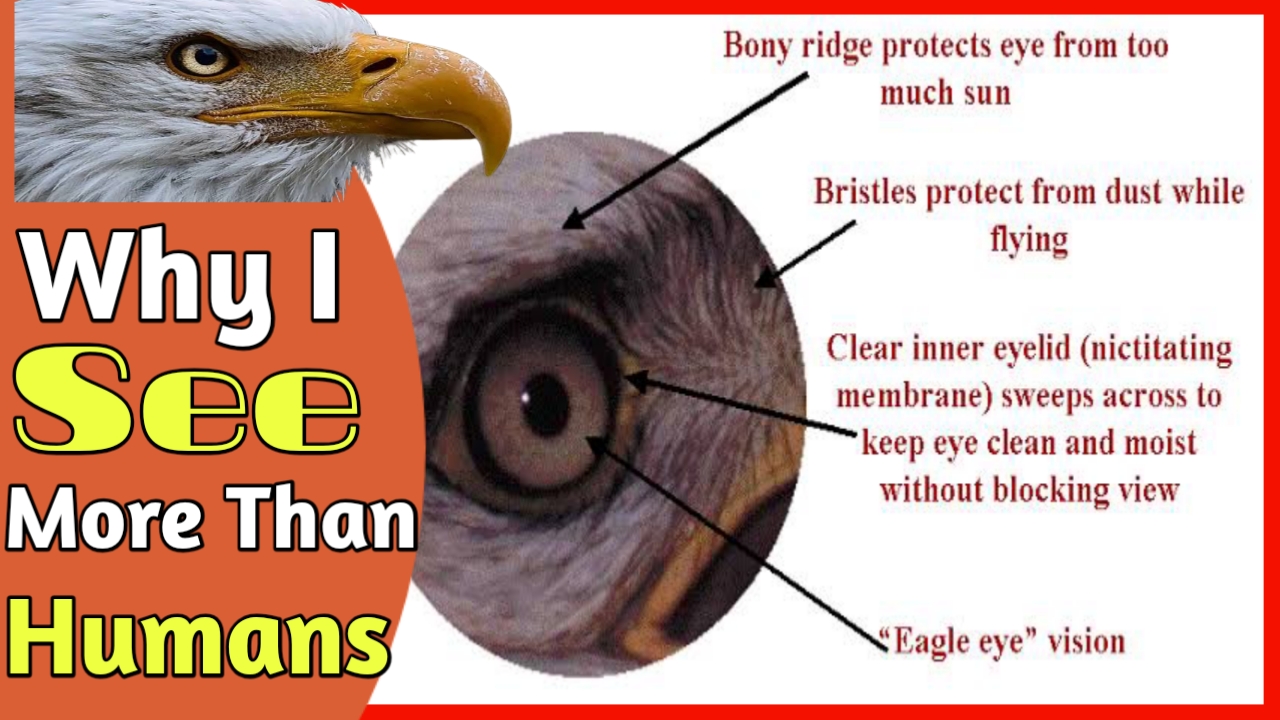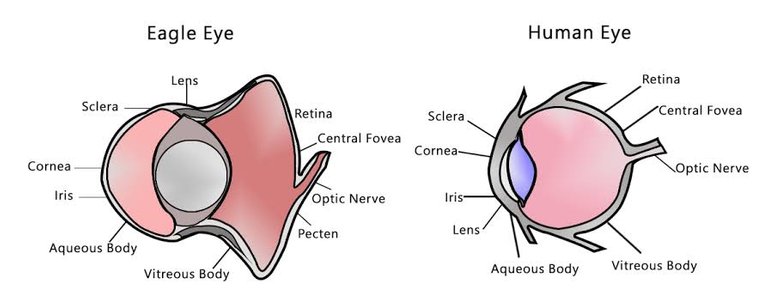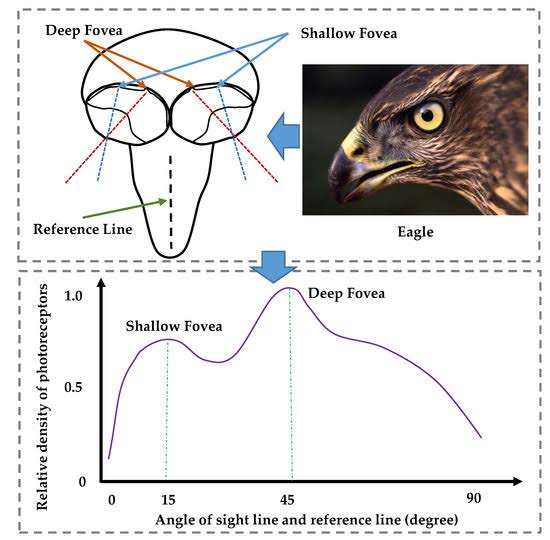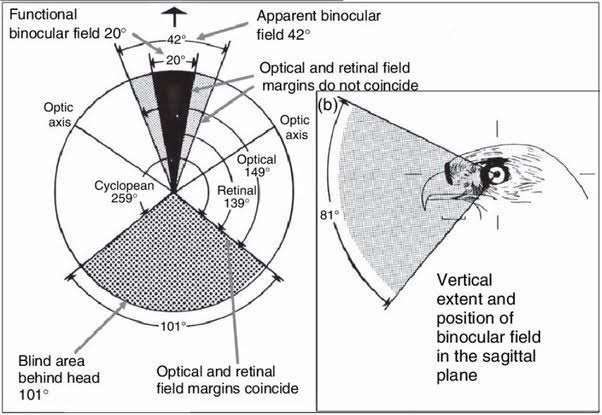Eagle Vision Superiority

Designed by me, but sourced from
The eagle is one of the most magnificent and well-known birds in the world. It is a symbol of power, freedom, and majesty. One of the most impressive abilities of eagles is their exceptional eyesight. Eagles have the ability to see much farther than humans, and there are several reasons why this is the case.
Firstly, eagles have a much larger eye size in comparison to their body size than humans. This means that their eyes can take in much more light, allowing them to see much better in low light conditions. In addition, eagles have a larger lens and cornea in their eyes, which helps them to focus light more effectively. These factors allow eagles to have a much higher visual acuity than humans.
Secondly, eagles have a higher concentration of rod cells in their eyes than humans. Rod cells are responsible for detecting light, and are particularly sensitive to low light conditions. In contrast, humans have a higher concentration of cone cells, which are responsible for detecting color and visual acuity. This means that eagles can see much better in low light conditions than humans can.
Thirdly, eagles have a much larger number of photoreceptors in their eyes than humans. Photoreceptors are cells that respond to light and allow us to see. Eagles have a much higher density of photoreceptors in their eyes, particularly in the fovea, which is the part of the eye responsible for high visual acuity. This means that eagles are able to see much more detail than humans.
Finally, eagles have a wider field of vision than humans. Eagles have an almost 340-degree field of vision, which allows them to see prey from a much greater distance. In contrast, humans have a field of vision of around 180 degrees. This wider field of vision allows eagles to detect prey that is far away, even while in flight.
In summary, eagles have several advantages that allow them to see much farther than humans. These advantages include larger eyes, a higher concentration of rod cells, a larger number of photoreceptors, and a wider field of vision. These adaptations make eagles one of the most efficient predators in the animal kingdom. The ability to see far and in great detail is an essential component of their survival, allowing them to find prey, avoid predators, and navigate their environment with precision.
The Composition of Eagle's Eyes
The composition of an eagle's eyes is indeed remarkable and allows them to see many things that humans cannot. Here are some of the key features that give eagles their superior vision:
Large Size:
Eagle eyes are larger than human eyes, which means they can take in more light and detail.
High Number of Photoreceptors:
Eagles have more photoreceptors in their eyes than humans, which means they can detect finer details and see more clearly.
Eye Shape:
The shape of an eagle's eye is almost tubular, allowing them to focus more precisely and see further distances. The cornea is also flatter than a human's, which allows for better long-distance vision.
Extra Muscles:
Eagles have more muscles in their eyes than humans, which allows them to move their eyes more easily and quickly. This helps them to quickly and accurately track prey.
Vision Adaptation:
Eagles also have a special adaptation in their eyes that allows them to see a wider range of colors than humans, which helps them to spot prey and navigate through their environment.
All of these features work together to give eagles an incredible ability to see detail from great distances, spot prey from high altitudes, and track moving targets with pinpoint accuracy.
Thanks for Reading!
I believe you now have a clearer understanding of why eagles see farther away than we humans do.
Hope this is the right community for this, if not, please kindly suggest the right community. Thanks


